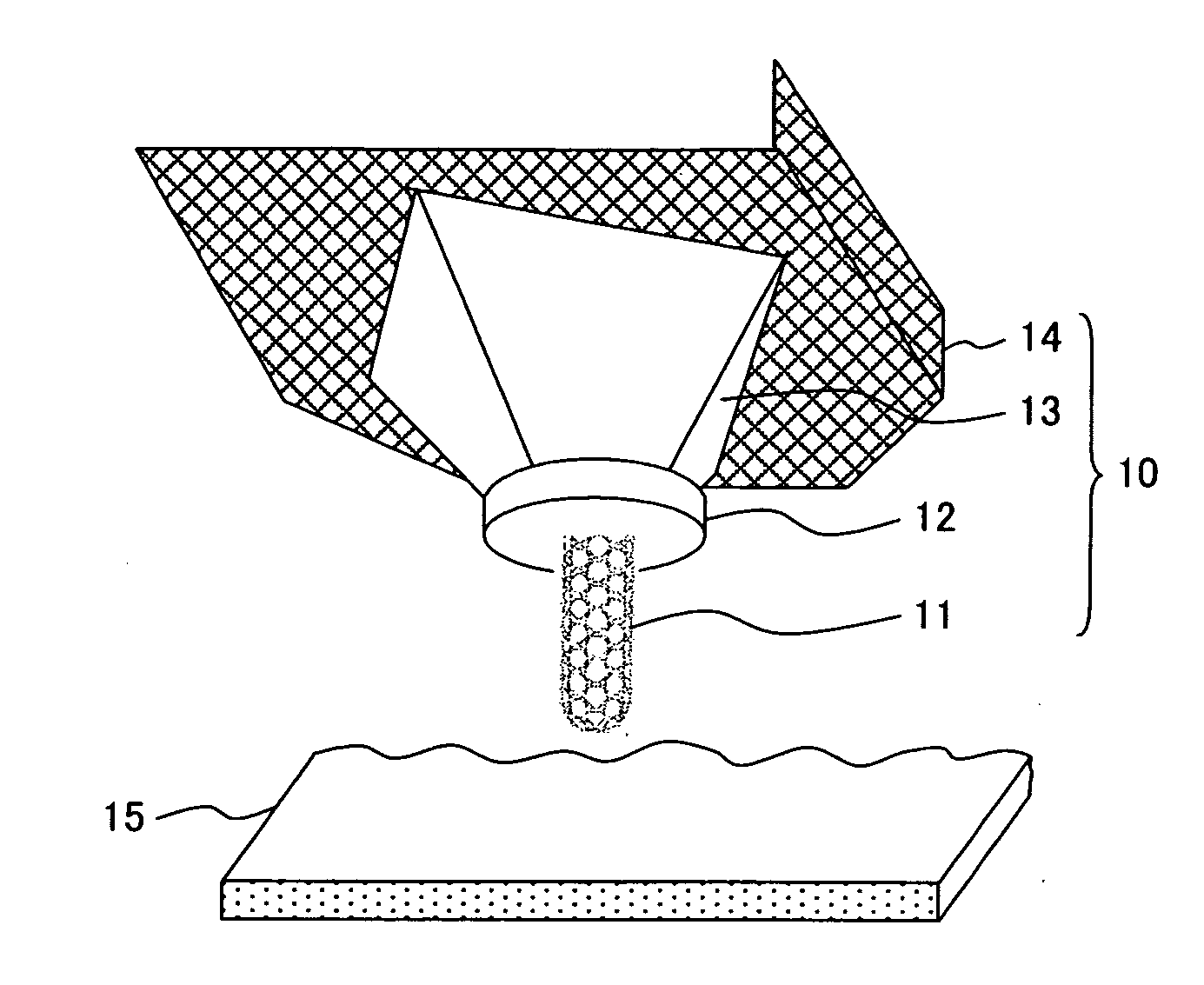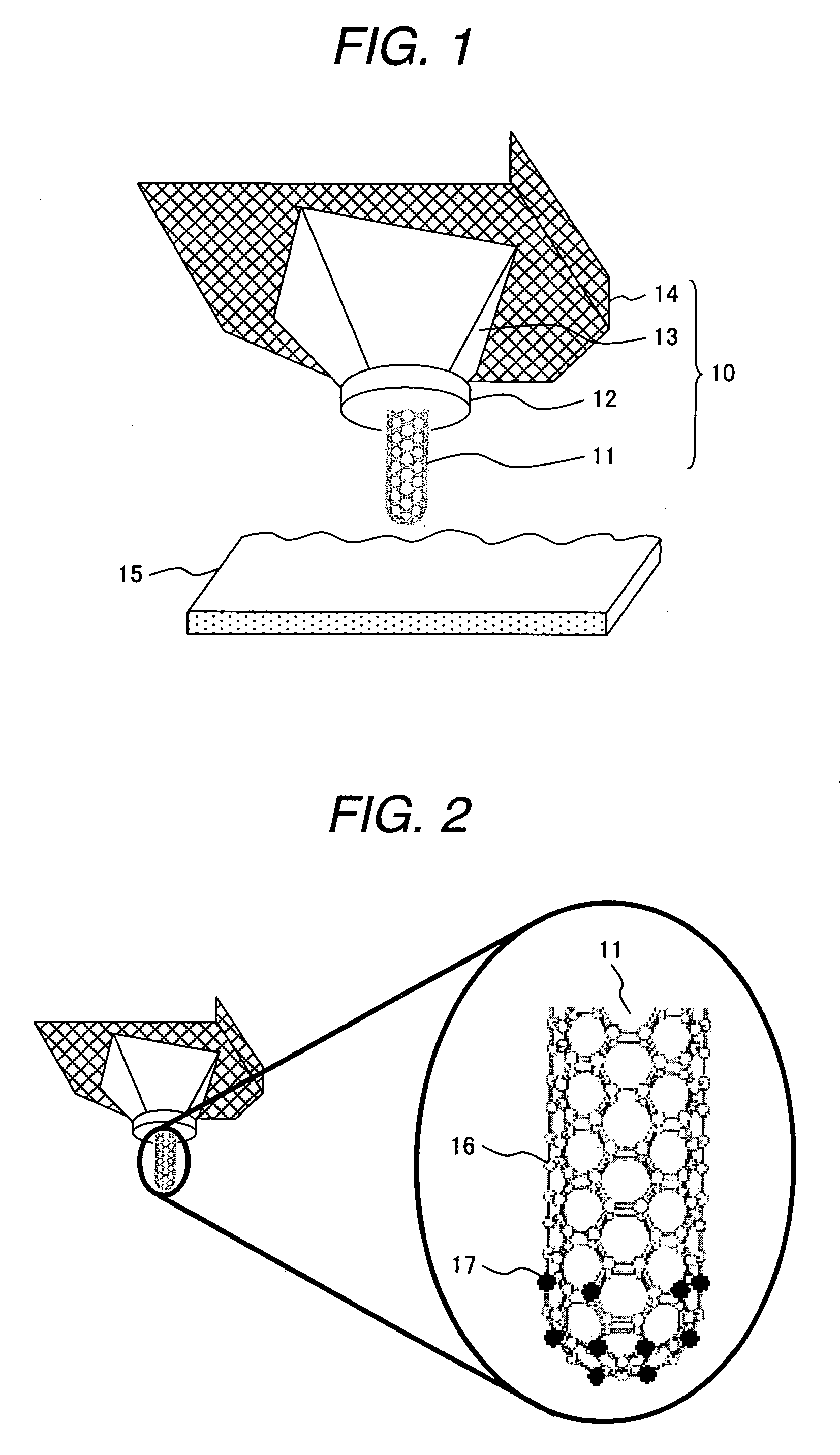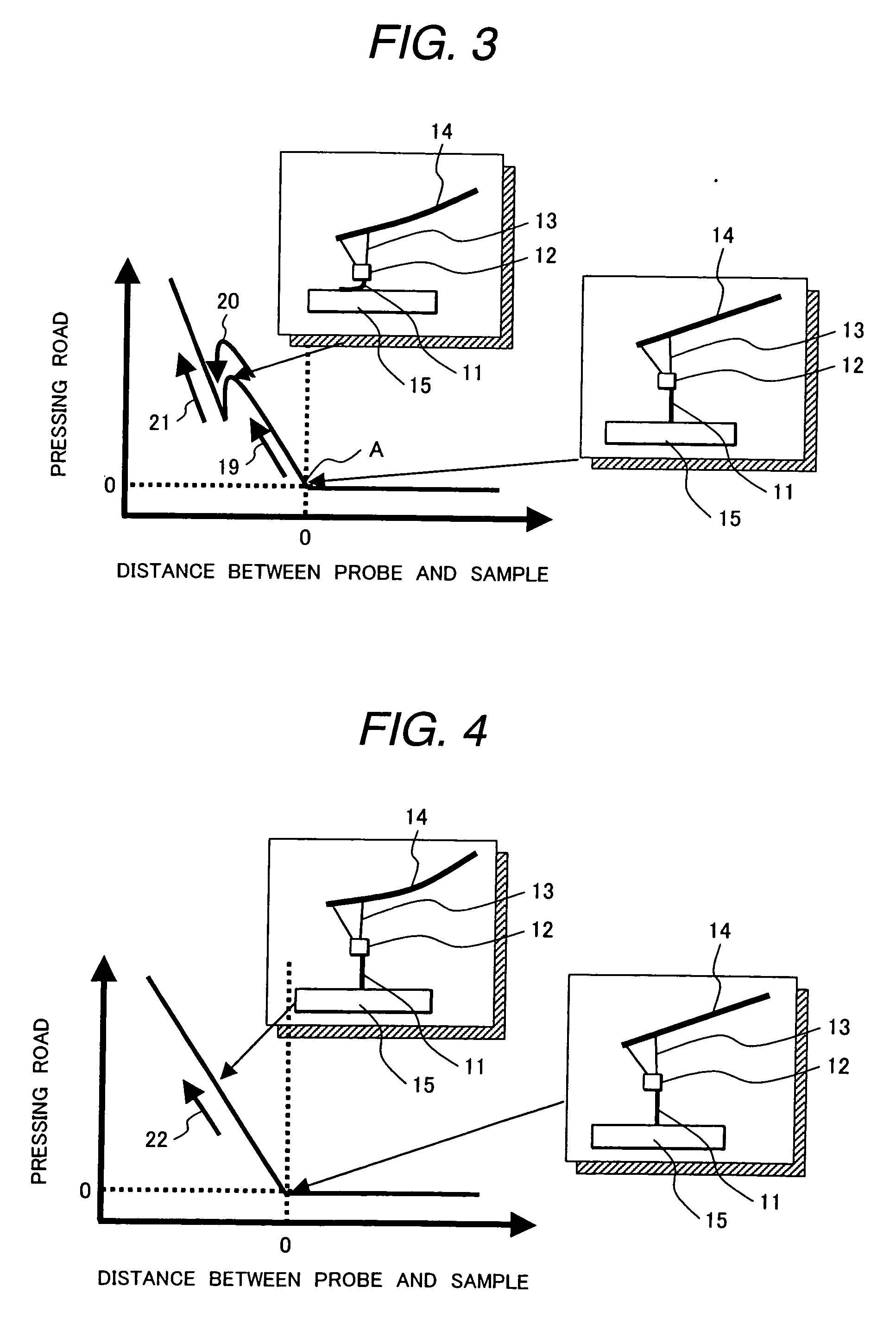Cantilever and inspecting apparatus
a technology of inspection apparatus and cantilever, which is applied in the direction of material analysis using wave/particle radiation, instruments, nuclear engineering, etc., can solve the problems of difficult to lower the current spring load of the cantilever, affecting the accuracy of inspection data provided by the lsi inspection apparatus and lithography apparatus, and causing bends or buckles. , to achieve the effect of improving the stiffness of the probe, improving the accuracy of image data provided by the lsi inspection
- Summary
- Abstract
- Description
- Claims
- Application Information
AI Technical Summary
Benefits of technology
Problems solved by technology
Method used
Image
Examples
first embodiment
[0075] In a first embodiment of the present invention shown in FIGS. 5 to 7, a single carbon nanotube probe 11 is fixed at an end of a holder 13 with a metal layer. FIG. 5 is a perspective view of the probe of the inventive cantilever. FIG. 6 generally shows the cantilever including the cantilever probe shown in FIG. 5. As shown in FIG. 6, the cantilever has a chip, which comprises a carbon nanotube probe 11, end joint layer 12-1, middle joint layer 12-2, root joint layer 12-3, and holder 13, and also includes a base 18; the chip is provided at one end (free end) of the beam 14 and the base 18 is disposed at the other end (fixed end). The middle joint layer 12-2 and root joint layer 12-3, which are metal layers, are used as fixing layers for fixing the probe 11 to the holder 13.
[0076]FIG. 7 is a cross-sectional view of the probe shown in FIG. 5. As shown in FIG. 7, the end joint layer 12-1 is separated into a supporting joint layer 12-1-1 on the obtuse angle side and a pressing joi...
second embodiment
[0097] An embodiment of an LSI inspecting apparatus having the inventive cantilever that uses a carbon nanotube including heteroatoms will be described with reference to FIG. 10. The LSI inspecting apparatus in this embodiment has a cantilever 10, which comprises a probe 11 formed by use of a hetero carbon nanotube and a beam 14 that supports the probe 11, and a contact detector for detecting that the cantilever 10 touches an LSI chip under test on a sample base 15. The contact detector comprises a laser source 51, a laser reflecting mirror 52, a light detector 53, and an amplifier 54 for amplifying an optical signal detected by the light detector 53. The apparatus further includes a Z-axis servo circuit 55 for feeding back a signal from the amplifier 54, a piezoelectric device 61 for adjusting the position of the sample base 15 in the height direction by use of a signal from the Z-axis servo circuit 55, an XY scanning circuit 56 necessary for obtaining two-dimensional surface infor...
third embodiment
[0099] An embodiment of a lithography apparatus having the inventive cantilever will be described with reference to FIG. 11. The lithography apparatus in this embodiment has substantially the same structure as the LSI inspecting apparatus shown in FIG. 10, except that a lithography power supply 90 for electrically connecting the cantilever 10 to the sample base 15 is provided. The hetero cantilever 10 is characterized in that it is hydrophilic. The use of the property enables the cantilever 10 to be employed as the probe 11 of the lithography apparatus. When the probe 11 of the cantilever 10 is brought into contact with a sample 45 under test by the lithography apparatus, a part brought into contact is covered with absorbed water 49. When current is passed through the absorbed water 49, the sample 45 is anodized, making lithographing possible.
PUM
 Login to View More
Login to View More Abstract
Description
Claims
Application Information
 Login to View More
Login to View More - R&D
- Intellectual Property
- Life Sciences
- Materials
- Tech Scout
- Unparalleled Data Quality
- Higher Quality Content
- 60% Fewer Hallucinations
Browse by: Latest US Patents, China's latest patents, Technical Efficacy Thesaurus, Application Domain, Technology Topic, Popular Technical Reports.
© 2025 PatSnap. All rights reserved.Legal|Privacy policy|Modern Slavery Act Transparency Statement|Sitemap|About US| Contact US: help@patsnap.com



